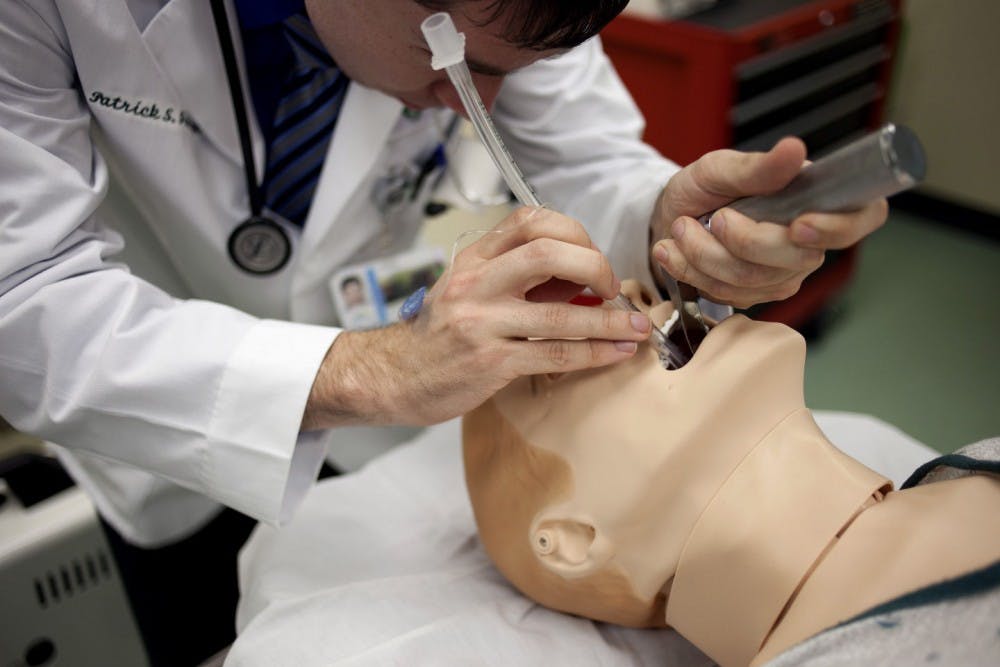HCOM students work with robotic patients, called human simulators, to perform dangerous procedures in a safe environment.
A group of medical students stand huddled around a dying patient, trying everything they can think of to keep him (or her?) alive, but their attempts are unsuccessful.
Fortunately for these students, the patient is only a robot.
Ohio University’s Heritage College of Osteopathic Medicine students work with technologically-controlled human simulators when practicing procedures that are too invasive or dangerous to perform on a person for the first time.
“The great part about the simulators is you can literally practice whatever you want, and you won’t actually hurt anyone,” said Patrick Finnegan, a second-year medical student. “You can work on any scenario you want to program, and you can just practice your skills over and over.”
The simulators cost about $16,000 each.
The simulators have a pulse, heartbeat and mimic breathing sounds, said Joanne Bray, director of clinical competency assessment.
They can emit fluids from different parts of the body, speak and groan when in pain or distressed, Bray said.
Students use the human simulators two to three times per semester as an opportunity to work on challenging procedures in a team, without any risks, said Nicole Wadsworth, associate dean of academic affairs for OU-HCOM.
The college has had versions of the robots for about 15 years and have had the current models for around five years.
Students perform operations such as cardiac and respiratory procedures on the simulators, Wadsworth said.
“The whole facility is used to allow students to practice because we don’t want them out there doing these challenging procedures to a real person,” Bray said. “This is a protected environment, where students can intubate and shock patients without potentially hurting them.”
While students work on a procedure, a professor or physician controls the simulator.
That person can alter breathing and heart rates or change what happens to the simulator to create a more real-life experience, Bray said.
Cameras are located in the corners of each simulation room so students can review tapes of their performances. The rooms mimic emergency rooms and include IVs next to the beds, shock paddles and have all the necessary surgical tools typically found in a hospital.
“It’s nice to go through the film after the simulation to see where you messed up,” said Kent Weaver, second-year medical student. “A physician will go through it with you, telling you this was bad and this was good.”
The simulation labs have also been used by organizations such as the Emergency Medicine Club that plans events for nursing and paramedic groups on campus.
“It’s great to see how the doctors are thinking during the simulation,” said Jeffrey July, a senior studying nursing. “It was helpful to have the brains of two different types of professionals working on one project because you get to see a different side of it.”
Some students said they enjoy working with simulators because of the real-life environment they create.
“Once you fail at something, you remember it more than what you read it in the book,” July said. “You always look for those certain things that you may have messed up on the simulators in the past.”
@Kcoward02
kc769413@ohio.edu






